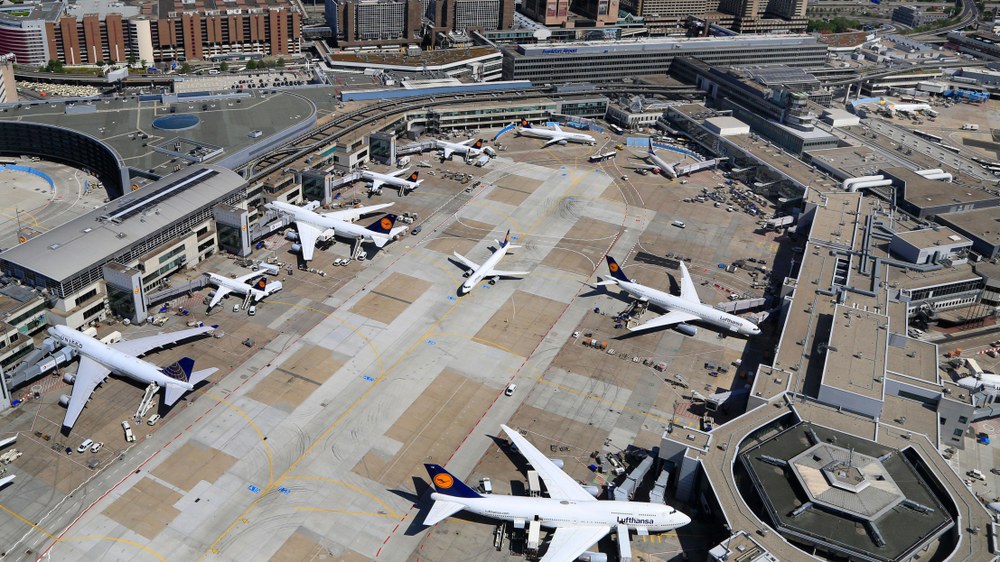2030 forecast – over 70 million additional air passengers in Germany
An important growth in passenger numbers is expected by 2030, according to the latest aviation report by the German Aerospace Center (Deutsches Zentrum für Luft- und Raumfahrt; DLR). In 2014, 105 million passengers were recorded in Germany, and scientists are predicting 175 million passengers for 2030. This represents an average annual increase of around 3.3 percent.
More passengers, larger aircraft, increase in air freight
Despite the significant rise in passenger numbers, experts are not anticipating a considerable increase in departures from German airports in 2030. "Larger aircraft will be used, leading to a relatively small increase in the number of take-offs," said Peter Berster from the DLR Institute of Air Transport and Airport Research in Cologne. A total of 1,070,000 take-offs per year are forecast for 2030. This represents an increase of 130,000 departures – and an annual growth of just one percent compared to 2014.
The increase in air freight will be particularly noticeable. "We expect the amount of loaded cargo to rise from 2.3 million tons in 2014 to 7.3 million tons in 2030," added Berster. Researchers believe that the reason for this is primarily the long-term positive development of the global economy.
2014 – growth in Germany, Asia overtakes North America
A review of the past year also confirms that aviation continues to grow in Germany. Since the aviation crisis of 2009, passenger numbers have risen by 13 million to a total of 105 million. The global increase in passenger numbers during this period is even greater. Compared to 2009, global passenger traffic has risen by one third – from around 2.5 billion to almost 3.3 billion passengers per year. This represents a larger increase in passengers than the entire population of the European Union.
But this global growth is not being driven by Europe, but mainly Asia, which is primarily responsible for the significant rise in global air passenger numbers. "At present, the Asian aviation industry carries even more passengers than the hitherto leading North American industry," stated Berster. "But the largest airlines are still located in the United States, such as Delta Air Lines, Southwest Airlines and United Airlines." Ryanair had the most passengers in Europe, and Lufthansa in Germany.
Air freight, flights, performance
The amount of air freight handled at German airports decreased slightly in 2014 compared to the previous year (0.8 percent). But with a total of 2.3 million tons of loaded cargo, it was well above the level recorded during the crisis of 2009 (1.9 million tons). Compared to the rest of Europe, total freight and postal shipments rose by almost four percent. Between 2005 and 2014, global airfreight volumes increased by just under 40 percent.
As more and more aircraft have extra seating capacity, there has only been a modest rise in the total number of flights worldwide, which has recorded slower growth than passenger numbers. But the decline in the number of flights since 2008 stopped in 2014, when this figure increased by 0.2 percent to almost 900,000. Approximately 33 million passenger flights worldwide were operated at the world's roughly 2500 airports – including some 7.6 million in Europe. In total, around 35,000 aircraft are in use around the world, predominantly for scheduled and charter services. This does not include an additional 90,000 smaller aircraft and helicopters that make up the business aviation sector.
Another key figure for measuring the extent of an airline's performance is the so-called seat kilometres available on the routes offered. Globally, some 7.6 billion seat kilometres were available in 2014. This represents a rise of 5.5 percent compared to 2013, but scientists regard this as a relatively small increase compared to the large growth rates of previous years.
A tradition of analysis
DLR's aviation report has been published on a yearly basis since 2004, with important figures about the structures and developments in aviation. DLR researchers analysed extensive aviation industry statistics, surveys and data to produce both the 2030 forecast and the 2014 annual report. The scientists' work focuses on aviation in Germany. However, as this is increasingly linked to European and international aviation, the report also includes changes in European and global aviation. Last year's report forecast a short-term increase in passenger numbers and cargo movements at German airports for 2015 and 2016. The model used for this has been further developed and used to produce a long-term forecast for German aviation until 2030.





